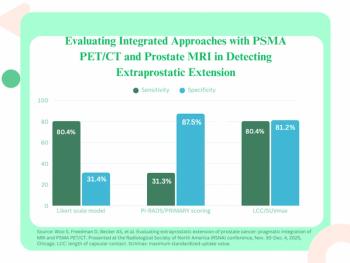
Out-of-Pocket Costs for Knee MRI Vary Considerably
Noncontrast MRI out-of-pocket expenses vary quite a bit depending on geography and population.
Outpatient out-of-pocket costs for knee MRI vary considerably across the country, with lower prices in more populous areas, according to a study published in the
Researchers from the Mayo Clinic in Rochester, MN, sought to determine the variability in pricing for noncontrast knee MRI, based on geographic location and population.
A total of 122 outpatient centers from 43 localities were included in the study. Nonhospital outpatient radiology centers were randomly chosen in each state’s highest-population locality, based on a list generated from the ACR MRI Accreditation Program database. The areas had to have at least two but no more than three centers for study inclusion. The data were further divided by population brackets: 50,000 to 500,000, 500,000 to 1 million, and more than 1 million.
The researchers, posing as a 21-year-old male college student who needed a noncontrast knee MRI to assess a knee injury sustained while playing football, contacted the centers by phone to determine the lowest, out-of-pocket, bundled cost (technical fee plus professional fee). The median (interquartile range) costs were calculated within each locality and region, including Midwest, Northeast, South, and West regions.
The results showed that costs for the examination ranged from $259 to $2,042 across all centers. For centers within a locality, the difference between the minimum and maximum costs ranged considerably among centers. For centers within a locality, the difference between the minimum and maximum costs among centers ranged from $1,592 to $0; median cost differences between localities ranged from $1,488 to $325.
Median cost geographically:
The researchers concluded that out-of-pocket expenses for outpatient knee MRIs varied considerably, both locally and nationally.
Newsletter
Stay at the forefront of radiology with the Diagnostic Imaging newsletter, delivering the latest news, clinical insights, and imaging advancements for today’s radiologists.



























